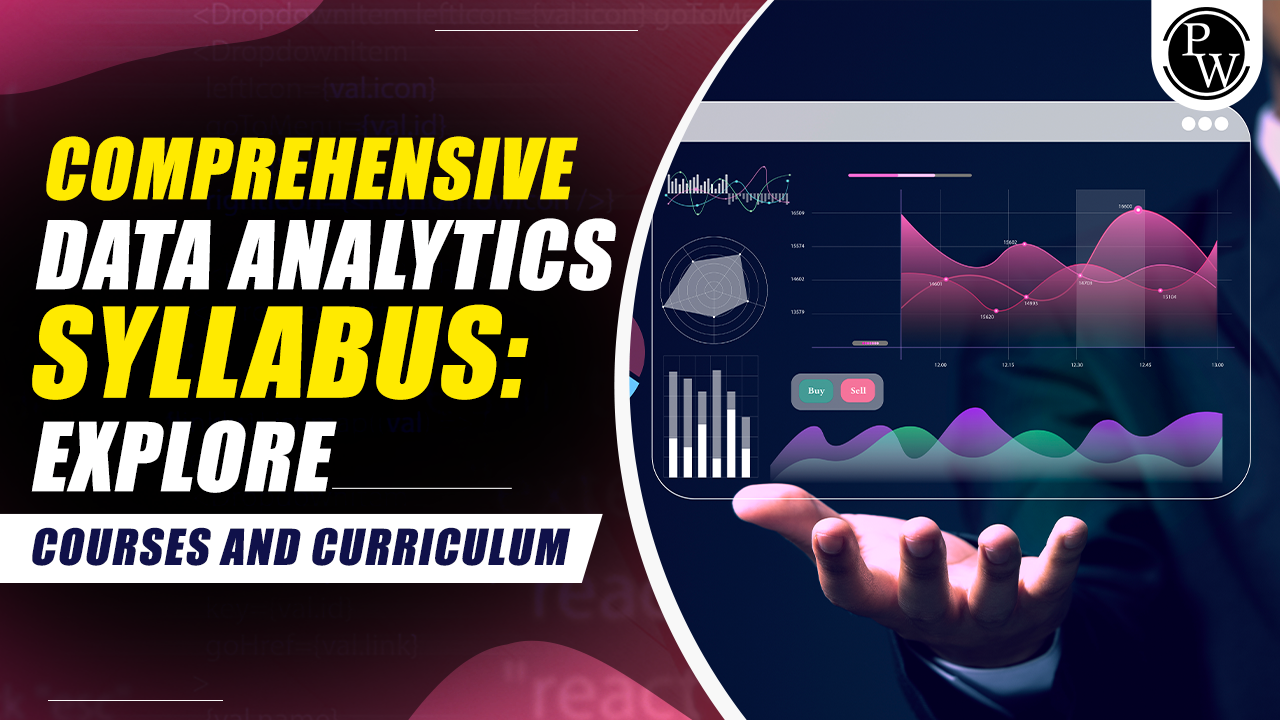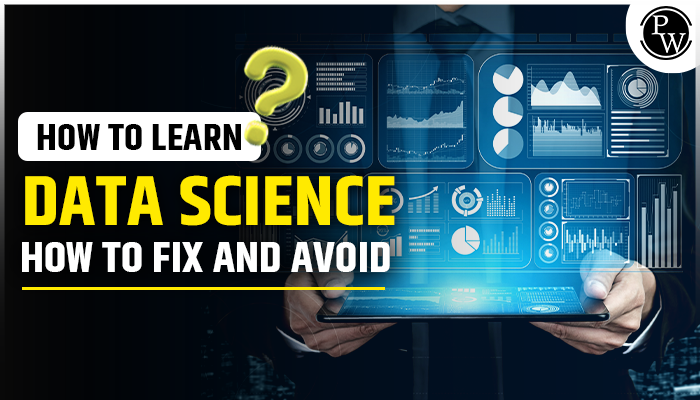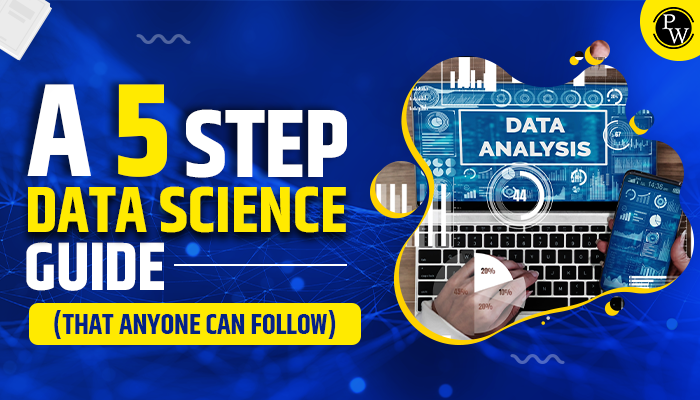Data analytics syllabus for complete details of the data analytics course is presented here. You can go through the syllabus and plan your preparation for the data analytics courses accordingly.
Data Analytics Syllabus: Understanding the data analytics syllabus is essential to plan the studies after enrolling in a data analytics course. Examining the syllabus also gives you insights into the key concepts covered in a specific course. You can compare the syllabus of various data analytics courses before enrolling. In this article, we will discuss the common concepts covered in most data analytics courses.
Definition of Data Analytics
Data analytics is a process of collecting and interpreting data to recognize current market trends. When you analyze the data, you also get insights into customer behavioral patterns. The collected data is categorized and analyzed to obtain key insights. Data visualization helps you to present the data in a pictorial form using charts and graphs.
Recommended Technical Course
Data Analytics Syllabus: Key Topics and Components
We have provided the key topics and concepts covered in different sections of data analytics courses:
Business Statistics is used to analyze business data for understanding, correlating, and forecasting future trends. You need to be well-versed in Mathematics to understand the concepts well. The entire business statistics syllabus has been provided below:
| Chapter |
Syllabus |
| Introduction to Statistical Analysis |
- Correlation and Regression
- Data Cleaning
- Imputation techniques
- Anova and Chi-Square
- Scatter Diagram
- Estimation and Hypothesis Testing
- Sampling Distributions
- Counting, Probability, and Probability Distributions
|
| Introduction to Data Analytics |
- Data Analytics: An Overview
- Importance of Data Analytics
- Types of Data Analytics
- Descriptive Analysis
- Diagnostic Analysis
- Predictive Analysis
- Prescriptive Analysis
- Benefits of Data Analytics
- Data Visualization for Decision Making
- Data Types, Measure of central tendency, Measures of dispersion
- Graphical techniques, box plot, skewness and kurtosis
- Descriptive Stats
- Sampling Funnel, Central Limit Theorem, Confidence Interval, Sampling Variation
|
Excel is a spreadsheet software that helps you sort, filter, and manage data. It is typically used to perform complex calculations. The syllabus for Microsoft Excel has been given below:
| Chapter |
Syllabus |
| Excel: Basic to Advanced |
- Excel tutorial
- Text to columns
- Concatenate
- The Concatenate Function
- The Right Function with Concatenation
- Absolute Cell References
- Data Validation
- Time and Date Calculations
- Conditional Formatting
- Exploring Styles and Clearing Formatting
- Using Conditional Formatting to Hide Cells
- Using the IF Function
- Changing the “Value if false” Condition to Text
- Pivot Tables
- Creating a Pivot Table
- Specifying Pivot Table Data
- Changing a PivotTables Calculation
- Filtering and Sorting a Pivot Table
- Creating a Pivot Chart
- Grouping Items
- Updating a Pivot Table
- Formatting a Pivot Table
- Using Slicers
- Charts
- Creating a Simple Chart
- Charting Non-Adjacent Cells
- Creating a Chart Using the Chart Wizard
- Modifying Charts
- Moving an Embedded Chart
- Sizing an Embedded Chart
- Changing the Chart Type
- Chart Types
- Changing the Way Data is Displayed
- Moving the Legend
- Formatting Charts
- Adding Chart Items
- Formatting All Text
- Formatting and Aligning Numbers
- Formatting the Plot Area
- Formatting Data Markers
- Pie Charts
- Creating a Pie Chart
- Moving the Pie Chart to its Own Sheet
- Adding Data Labels
- Exploding a Slice of a Pie Chart
- Data Analysis Overview
- Working with Range Names
- Copying Name using Formula Autocomplete
- Range Name Syntax Rules
- Creating Range Names
- Creating Names for Constants
- Managing Names
- Scope of a Name
- Editing Names
- Applying Names
- Using Names in a formula
- Viewing Names in a Workbook
- Copying Formulas with Names
- Difference between Tables and Ranges
- Create Table
- Table Name
- Managing Names in a Table
- Table Headers replacing Column Letters
- Propagation of a formula in a table
- Resize Table
- Remove Duplicates
- Convert to Range
- Table Style Options
- Table Styles
- Cleaning Data with Text Functions
- Removing Unwanted Characters From Text
- Extracting Data Values from Text
- Formatting Data with Text Functions
- Date Formats
- Conditional Formatting
- Sorting
- Filtering
- Lookup Functions
- Pivoting
|
SQL (Structured Query Language) is a database management system. You can use it to store and manage data. Some of the key aspects of its syllabus have been mentioned below:
| Chapter |
Syllabus |
| Structured Query Language |
- Introduction to Oracle Database
- Retrieve Data using the SQL SELECT Statement
- Learn to Restrict and Sort Data
- Usage of Single-Row Functions to Customize Output
- Invoke Conversion Functions and Conditional Expressions
- Aggregate Data Using the Group Functions
- Display Data From Multiple Tables Using Joins
- Use Subqueries to solve queries
- The SET Operators
- Data Manipulation Statements
- Use of DDL Statements to Create and Manage Tables
- Other Schema Objects
- Control User Access
- Management of Schema Objects
- Manage Objects with Data Dictionary Views
- Manipulate Large Data Sets
- Data Management in Different Time Zones
- Retrieve Data Using Subqueries
- Regular Expression Support
|
Tableau is a data visualization software that also helps in analyzing data. Some of the crucial components of its syllabus have been listed below:
| Modules |
Syllabus |
| Module 1: Tableau Course Material |
- Start Page
- Show Me
- Connecting to Excel Files
- Connecting to Text Files
- Connect to Microsoft SQL Server
- Connecting to Microsoft Analysis Services
- Creating and Removing Hierarchies
- Bins
- Joining Tables
- Data Blending
|
| Module 2: Learn Tableau Basic Reports |
- Parameters
- Grouping Example 1
- Grouping Example 2
- Edit Groups
- Set
- Combined Sets
- Creating a First Report
- Data Labels
- Create Folders
- Sorting Data
- Add Totals, Sub Totals, and Grand Totals to Report
|
| Module 3: Learn Tableau Charts |
- Area Chart
- Bar Chart
- Box Plot
- Bubble Chart
- Bump Chart
- Bullet Graph
- Circle Views
- Dual Combination Chart
- Dual Lines Chart
- Funnel Chart
- Traditional Funnel Charts
- Gantt Chart
- Grouped Bar or Side by Side Bars Chart
- Heatmap
- Highlight Table
- Histogram
- Cumulative Histogram
- Line Chart
- Lollipop Chart
- Pareto Chart
- Pie Chart
- Scatter Plot
- Stacked Bar Chart
- Text Label
- Tree Map
- Word Cloud
- Waterfall Chart
|
| Module 4: Learn Tableau Advanced Reports |
- WMS Server Map as a Background Map
- Mapbox Maps as a Background Map
- Use Google Maps
- Symbol Map
- Basic Maps
- Reference Distributions
- Reference Bands
- Add Reference Lines
- Individual Axis
- Blended Axis
- Dual Axis Reports
|
| Module 5: Learn Tableau Calculations and Filters |
- Extract Filters
- Data Source Filters
- Slicing Filters
- Context Filters
- Filters on Measures
- Top and Bottom Filters
- Conditional Filters
- Filters on Dimensions
- Quick Filters
- Filters Introduction
- Calculating Running Total
- Advanced Approach to Calculate Rank
- Basic Approach to Calculate Rank
- Calculated Fields
|
| Module 6: Learn Tableau Dashboards |
- Create a Dashboard
- Format Dashboard Layout
- Create a Device Preview of a Dashboard
- Create Filters on Dashboard
- Dashboard Objects
- Create a Story
|
| Module 7: Server |
- Tableau Online
- Overview of Tableau Server
- Publishing Tableau Objects and Scheduling/Subscription
|
Power BI converts raw data into insights that are immersive and meaningful. You can feed data from spreadsheets, cloud, or data warehouse to this software. The syllabus related to Power BI have been mentioned in the below table:
| Module |
Syllabus |
| Module 1: Introduction to Power BI |
- Get Started with Power BI
- Overview: Power BI Concepts
- Sign Up for Power BI
- Overview: Power BI Data Sources
- Connect to a SaaS Solution
- Upload a local CSV File
- Connect to a sample
- Explore the Power BI portal
- Connect to Excel Data that can be Refreshed
|
| Module 2: Viz and Tiles |
- Overview: Visualizations
- Using Visualizations
- Create a new report
- Create and arrange visualizations
- Format a Visualization
- Create Chart Visualizations
- Use text, map, and gauge visualizations and save a report
- Use a slicer to filter visualizations
- Sort, copy, and paste visualizations
- Download and use a custom visual from the gallery
|
| Module 3: Reports and Dashboards |
- Modify and Print a Report
- Rename and delete report pages
- Print a report page
- Add a filter to a page or report
- Set visualization interactions
- Send a report to PowerPoint
- Create a Dashboard
- Create and manage dashboards
- Pin a report tile to a dashboard
- Pin a live report page to a dashboard
- Pin a tile from another dashboard
- Pin an Excel element to a dashboard
- Manage pinned elements in Excel
- Add a tile to dashboard
- Build a dashboard with Quick Insights
- Set a Featured (Default) Dashboard
- Ask questions about your data
- Ask a question with Power BI Q&A
- Tweak your dataset for Q&A
- Enable Cortana for Power BI
|
| Module 4: Publishing Workbooks and Workspace |
- Share Data with Colleagues and Others
- Publish a report to the web
- Manage published reports
- Share a dashboard
- Create an app workspace and add users
- Use an app workspace
- Publish an app
- Create a QR code to share a tile
- Embed a report in SharePoint Online
|
| Module 5: Other Power BI Components and Table Relationship |
- Use Power BI Mobile Apps
- Get Power BI for mobile
- View reports and dashboards in the iPad app
- Use workspaces in the mobile app
- Sharing from Power BI Mobile
- Use Power BI Desktop
- Install and launch Power BI Desktop
- Get Data
- Reduce Data
- Transform Data
- Relate Tables
- Get Power BI Desktop data with Power BI Service
- Export a report from Power BI service to desktop
|
| Module 6: DAX Functions |
- New Dax Functions
- Data and time functions
- Time intelligence functions
- Filter functions
- Information functions
- Logical functions
- Math and trig functions
- Parent and child functions
- Text functions
|
Python is a programming language that is used for data visualization, data analysis, and web development. The important components of its syllabus have been provided below:
| Chapter |
Syllabus |
| Python Basics |
- The Print Statement
- Comments
- Operators in Python
- Shallow Copy
- Deep Copy
- Simple Output Formatting
- Simple Input and Output
- String Operations in Python
- Python Data Structures and Data Types
|
Also Read Technical Topics
These were some key details regarding the data analytics syllabus. If you want to pursue a career in data analytics, you must enroll in a competitive online course. PW Skills offers a wide range of data analytics courses. Apart from live classes from professionals, you can join the job assurance program to secure your job after course completion.
Want to pursue a dream career in data analytics? Enroll in online courses offered by PW Skills and acquire all the knowledge and skills to become a full-stack data analyst!
FAQs
What is the curriculum for the data analytics course?
The data analytics syllabus includes topics such as data blending, regression analysis, analytics tools and techniques, Python/R programming, inferential statistics, data extraction, and hypothesis testing.
Which are the main subjects covered in data analytics?
The main subjects included in data analytics syllabus include decision making in context of business analytics, numerical analysis, statistical analysis, systems analysis and design.
What is the tenure of data analytics courses?
Most data analytics courses have a tenure of 1 year. Some courses even have a tenure of 1, 3, or 6 months.
Are data analytics courses difficult?
The difficulty level of the data analytics courses depends on their syllabus. Some individuals find it difficult because they have to master some technical skills. Also, as this field is evolving at a rapid rate, you will have to keep upgrading your skills constantly.
What does a data analyst do?
A data analyst tries to solve business problems using insights obtained from data. He needs to identify the genuine data sources and deploy data collection tools to obtain, clean, and organize data. Finally, the data is processed to extract meaningful insights.
What is the difference between data analytics and data science?
Both data science and data analytics involve the use of data to gain meaningful insights. However, data science is more related to creating data models whereas data analytics is more focussed on observing historic data before making business decisions. So, the way in which data is used and manipulated is different in both these concepts.
Which skills do data analysts need?
Some in-demand data analytics skills include knowledge in machine learning, SQL, statistical visualization, data management, and some other statistical and mathematical concepts.
Is coding required to be a data analyst?
Though advanced programming skills are not required to be a data analyst, some knowledge about coding is essential.




